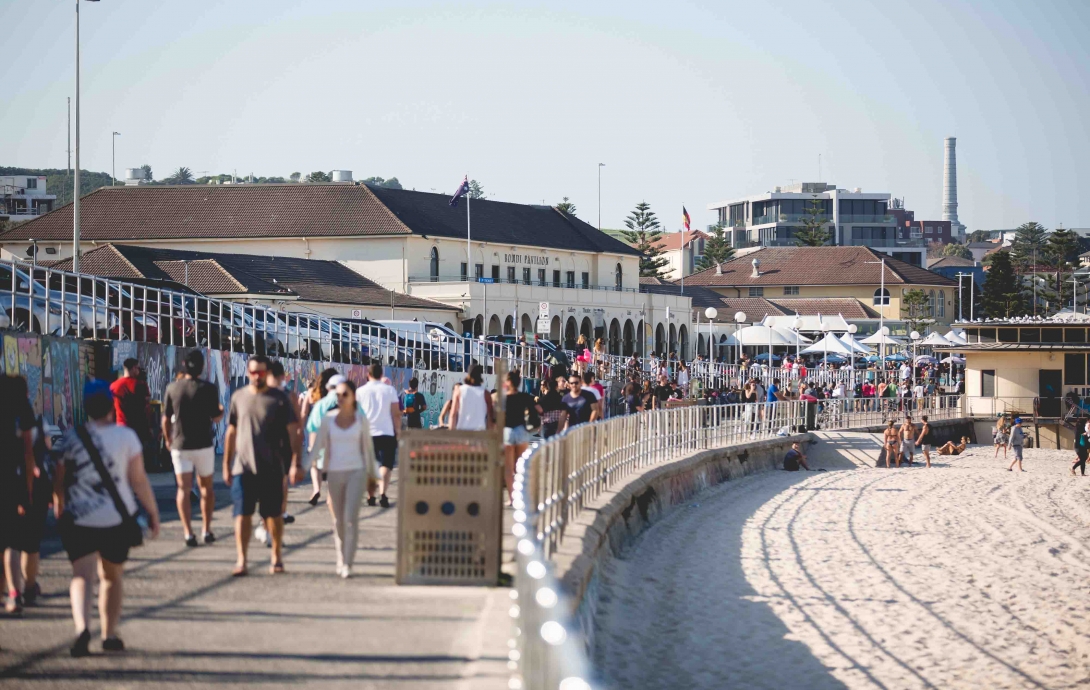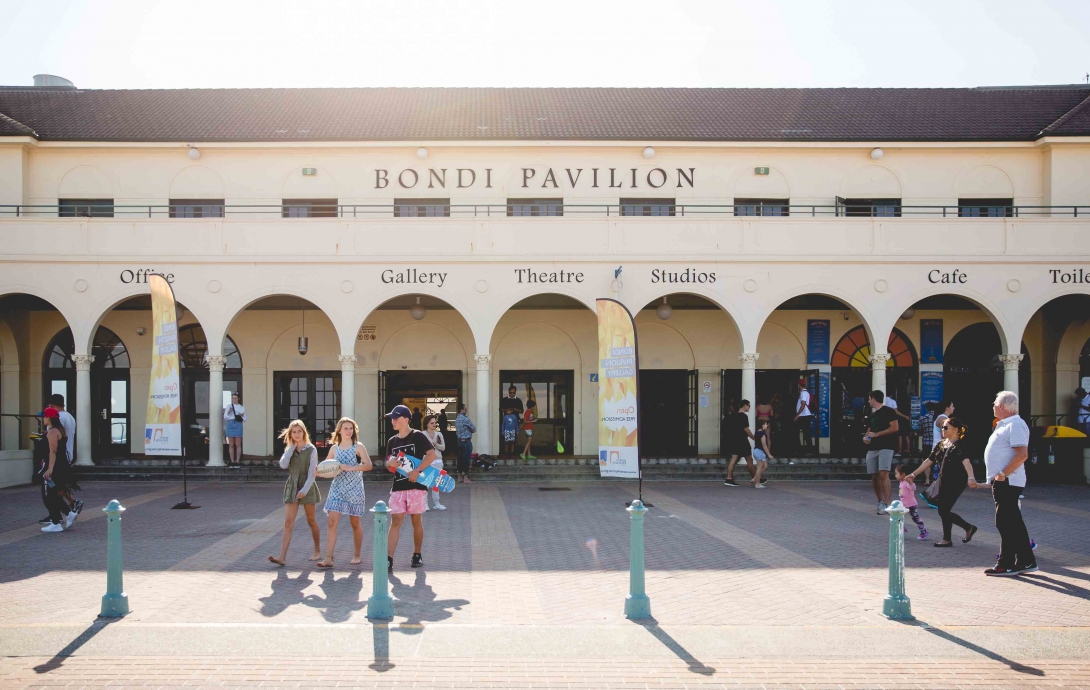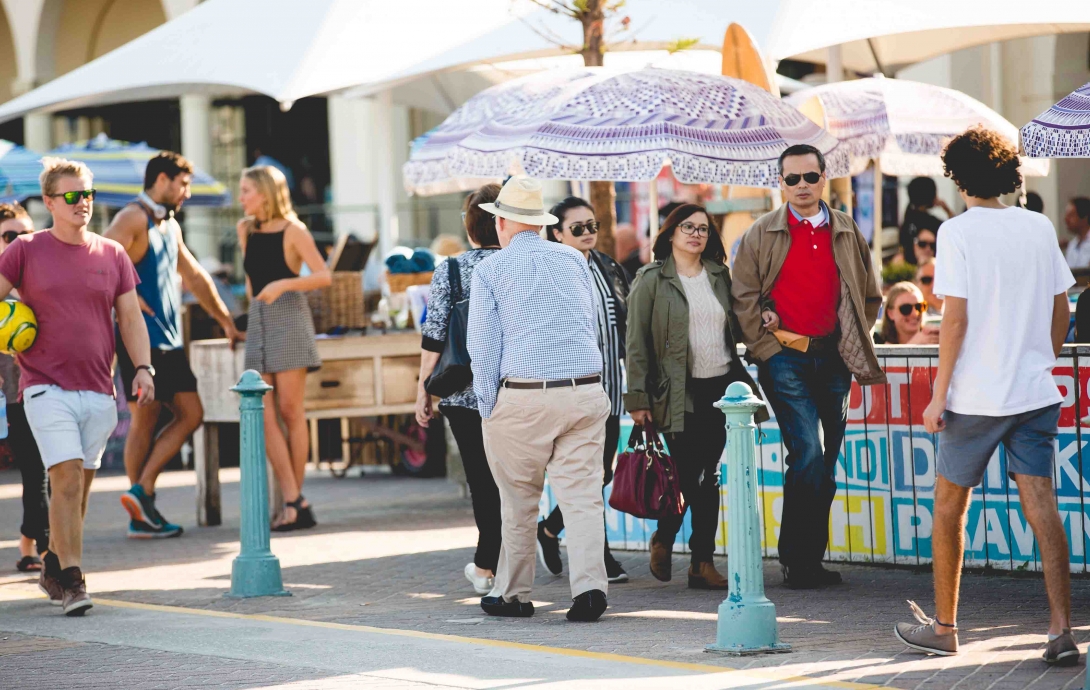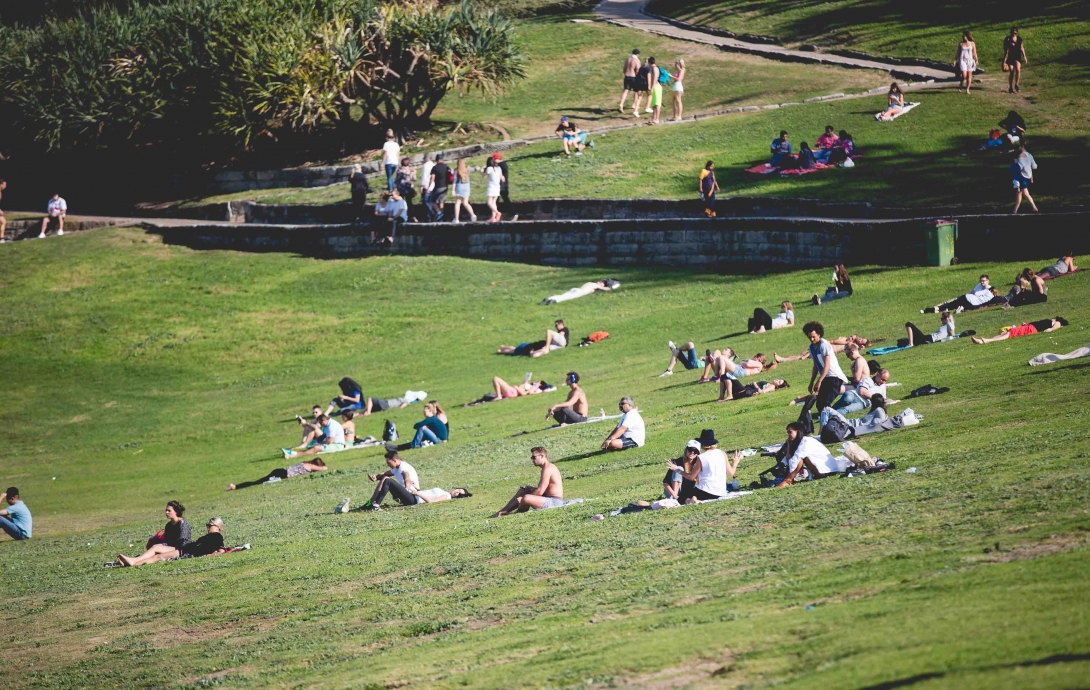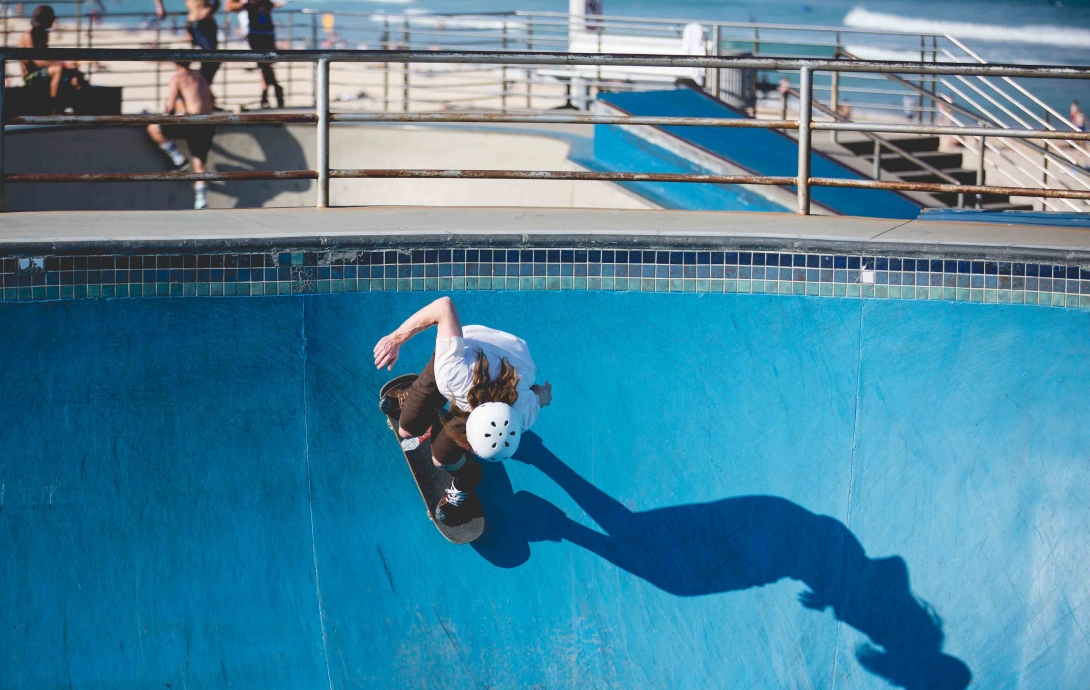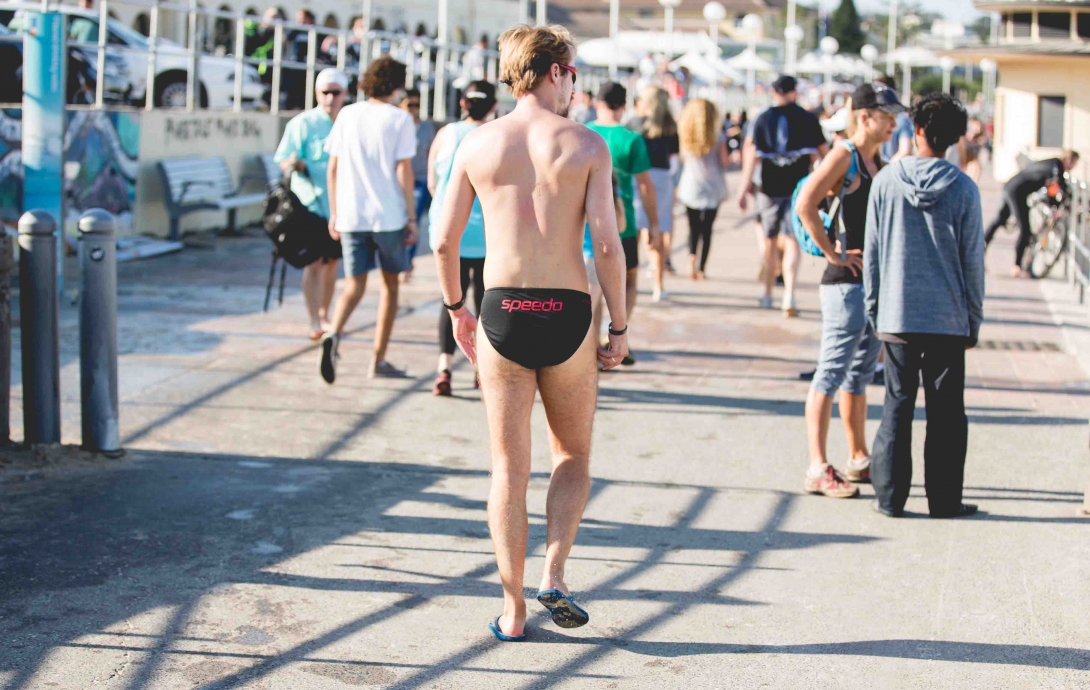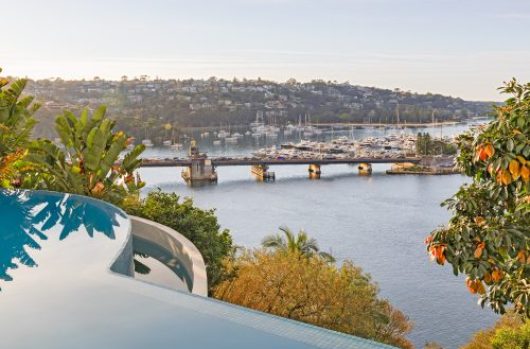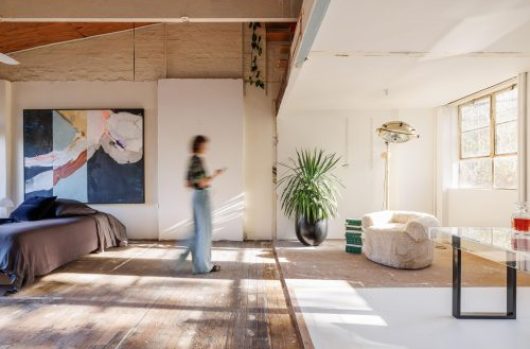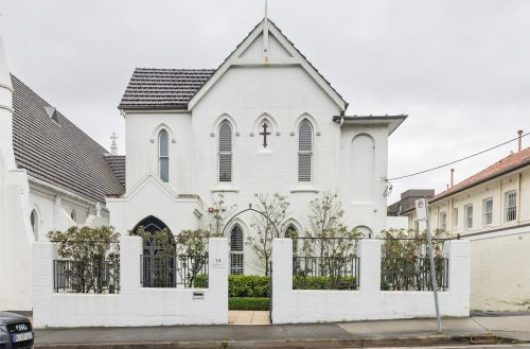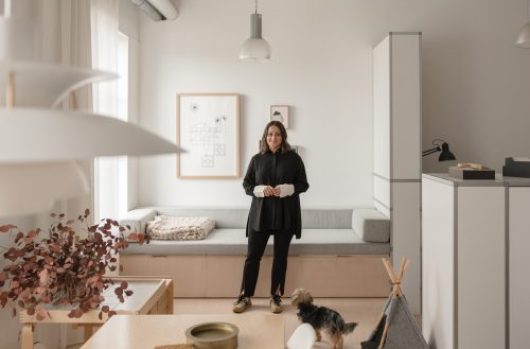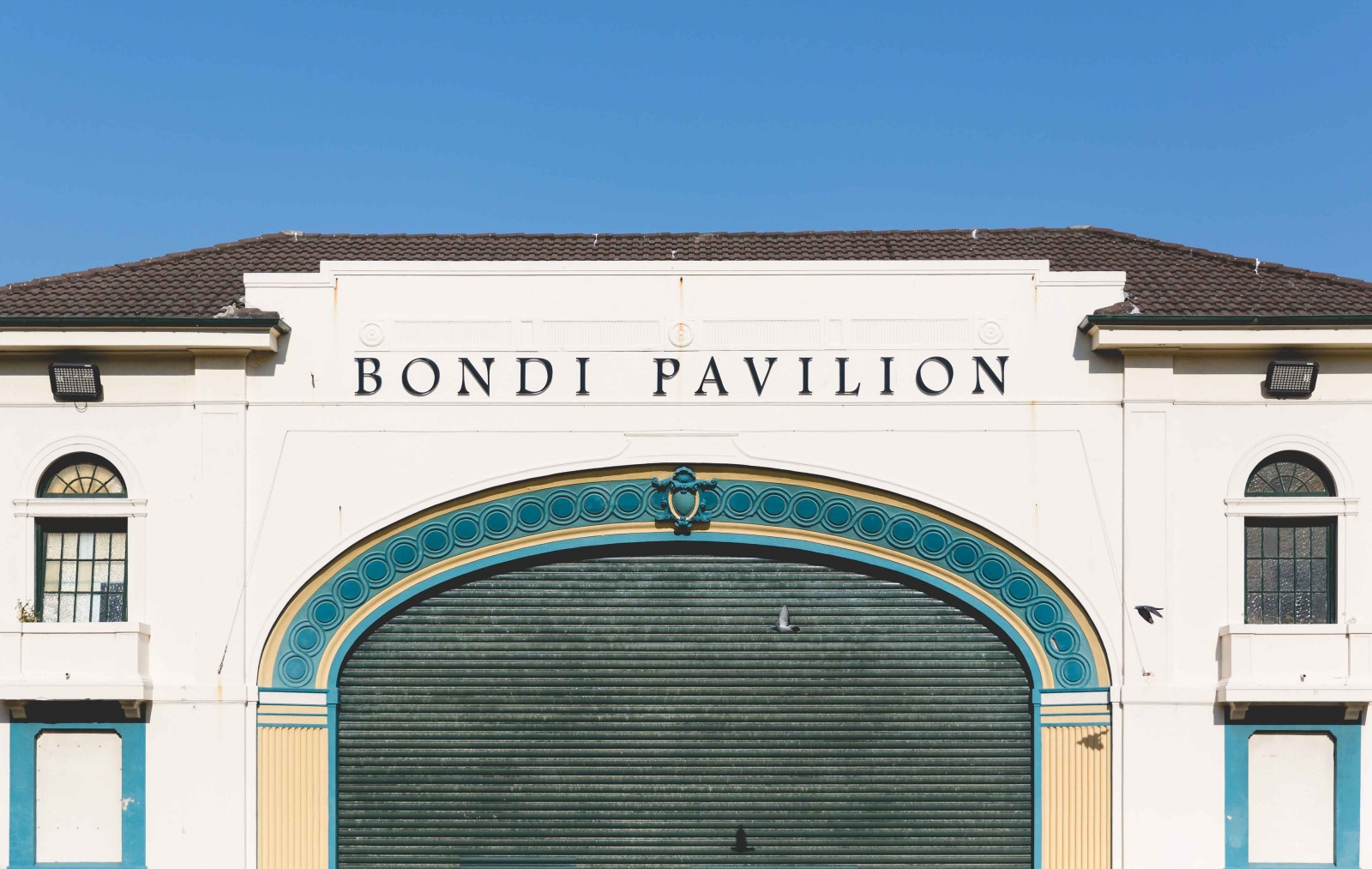
Drama at Bondi Pavilion
In summer we’re so accustomed to seeing bikini-clad girls taking selfies on Bondi Beach, we have forgotten its more demure history. Those not too distant times, when men and women of all ages would enter Bondi Pavilion and used tiny changing sheds to discard of their street clothes, before donning a swimming suit for the big cool down. Back then, when Bondi Pavilion was built in the early 1930s, tunnels linked the Pavilion to the sand and the internal rear courtyard was filled with hundreds of tiny changing sheds. Today the Pav is set for a major upgrade. Waverley Council plan to convert it from a daggy sea-side community hall, to a world-class venue.
The overhaul, originally slated to cost nine million dollars, will now see ratepayers shelling out thirty-eight million dollars for a function centre, restaurant, new theatre and community halls designed by Tonkin Zulhaika Greer Architects. But just when you thought Bondi had gone completely nouveau riche, a swathe of locals have turned out to fight the privatisation of Australia’s largest beach pavilion. Local Liberal mayor Sally Betts now has a nasty fight on her hands.
Several high-profile people from the arts community, including gallerist Tim Olsen, actor Jack Thompson, musician, activist and former politician Peter Garrett, artist Reg Mombassa, actor Michael Caton and musician Peter O’Doherty have all denounced the plans.
Their voices have not gone unnoticed.
This week Australian union and environmental activist Jack Mundey leant his weight to the debate, by enforcing a green ban on the redevelopment. For those of you who don’t remember, Jack Mundey was the poster child of the labor unions in the ’70s.
He is the man who helped impose forty-two green bans in Sydney between 1971 and 1974. Green bans helped to protect historic nineteenth century buildings in The Rocks from being demolished to make way for office towers, and prevented the Royal Botanic Gardens from being turned into a carpark for the Sydney Opera House.
So what will become of our beloved Bondi Beach and the blessed pav? Part million dollar ghetto, part resort – we wanted to ask locals and the lead architect if Bondi is still a vibrant cultural mixing bowl with room for middle income earners and pensioners? Or is it destined to become another flashy tinsel town for the upper middle class?
The architect, Peter Tonkin from Tonkin Zulaihka Greer says locals will lap it up.
“I am fairly convinced this is a building locals will embrace,” Tonkin says. His studio, well known for their exquisite adaptive re-use work on public projects like the Paddington Reservoir and Carriageworks have been working on their sketches for the past year. “Bondi Pavilion is the largest beach pavilion of its kind in Australia. With that half classical, half Spanish mission style, it’s very hard to compare it to anything else,” he says.
“We think locals will embrace it, especially because we are making the internal courtyards useable again, which are especially good for locals to be down by the beach in winter, out of the wind. Those external areas at the back are very sunny, whereas the front of the pavilion is out of the sun for most of the afternoon. “We are also getting rid of a lot of the rubbish and the service vehicles from out of the back on the parade side of the building, so we will get the feeling the pavilion has been opened to the suburb of Bondi and not just to the beach,” Tonkin says.
TZG say their new plan will reinstate the colonnades that line the back and sides of the building by opening them onto the courtyard and dislodging homeless people who currently claim the space. Tonkin stresses the inclusion of extra facilities such as the state of the art theatre and nearly double the number of toilets, will make the Pavilion more user-friendly. “Parts of it will have a conserved heritage feel, certainly the function and restaurant spaces upstairs and the front lobby will. Other spaces that have been altered time and again over the years, I am imagining, will have fresh, contemporary beachside feel. But we haven’t done the interior design yet,” he says
Tonkin is not concerned about the price tag, saying it is not exorbitant when you consider the structural work needed. “Nearly half the building costs go in engineering. $38 million is a big number for local government but Council is very confident that they can finance it, because of the increased amount of commercial area. And there is more commercial area in the new scheme, which means that over time it pays for itself,” Tonkin says.
In the current debate business needs have been treated as being greater and of more value than the community needs, but this skewed perspective presented by Council forgets how community spaces in Bondi fuel a safe and resilient beachside culture.
This point is not lost on The Arts Party candidate for the Senate, Barry Keldoulis.
“I think the community spirit in Bondi is actually very resilient. One of the things that I have always loved about Bondi is its variety of old-timers, incoming community, arts community, backpackers and day visitors,” he says, a resident of Bondi for over 20 years.
But Barry Keldoulis says with flats being knocked down to accommodate single-dwelling family mansions, there is legitimate fear Bondi is losing its ‘middle-income feel’.
“My neighbour alerted me to the changes because he was so outraged they were going to paint the Pavilion white,” says Barry laughing. “I went down to a precinct meeting that was well attended, but I expected the architects would be there to talk about the proposal and to appease some of the community concerns.
“I know Tonkin Zulaihka Greer, who have done some amazing restoration and re purposing work around Sydney, so I was quite confident that I would like the proposal, but there was no representatives of the firm, they had not been invited and they had not declined either. It was mainly people expressing their concern and dismay with aspects of the proposal, and expressing their anger in fact,” Keldoulis says.
“I thought at that stage the proposal from council could be amended, but it wasn’t the case. In fact it was a lot further long the process than I realised. Plans do appear to have been pushed through rapidly and the biggest concern – aside from the upkeep the building itself will need, is the apparent loss of space for community purposes,” he says. Despite recent on paper concessions to community, Barry says, “It is really hard to tell if the commercial to community ratio has been amended by council or not”.
It seems the Bondi Pavilion is slipping out of public hands.
“The thing that is really changing is the attitude toward the building in general. People don’t want it to become a commercial building. There is a general feeling that the commercial building going in will be of a high-end and expensive nature,” Keldoulis says.
“The council keep saying that Bondi Pavilion is a world famous pavilion and I think that the beach is world famous. But I am not sure the pavilion is. So they keep using this language toward the building – and giving it this world famous tag – but then they were also saying they want it to retain its qualities as a changing shed and bathhouse. I feel a little bit like, ‘You need to need decide what you want here’; because the two things aren’t the same,” he says.
Peter Tonkin says these two commercial and community uses can coexist in the new plan.
“I think one of the tricks to the building presenting better and being used better is to start to draw a soft line, not a hard line but a soft line between the sandy and salty people that use the Pavilion and the clean people that use it for other purposes, if I can put it like that. Right now with the change rooms you have to go through the foyer, its just awful,” Tonkin says.
Loyal locals beg to differ.
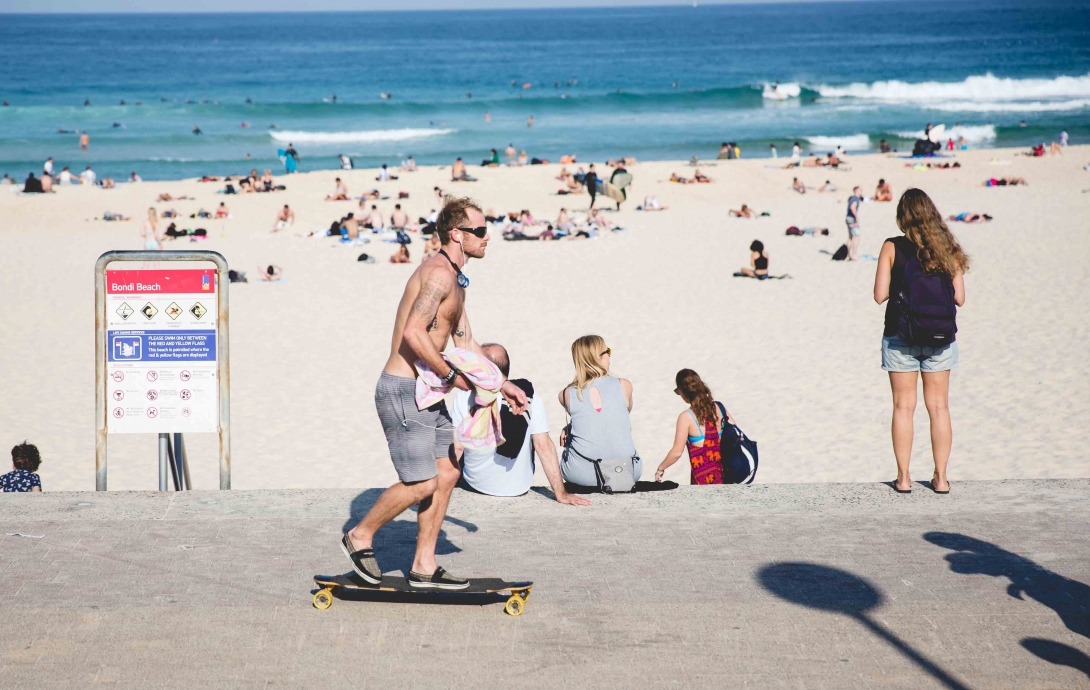
The legendary Australian muso Dave Faulkner from the Hoodoo Gurus, says the upgrade was “aimed squarely at handing the pavilion over to commercial interests.”
“I am opposed to all the elements of the Bondi Pavilion redevelopment. It’s a public building, it belongs to the community. Right now it is being taken over and over half if it is being given to private interests. The pavilion is well used by the community and well-liked. There is no reason for an upgrade,” Faulkner says.
“Absolutely everything the Waverley Council has done has to been to try to avoid public scrutiny. I was made aware of the project quite late, in fact everyone was. If I wanted to put in a new window in my home I would have to apply for a DA to council and would have to get all my neighbours to agree. We were NOT told about this redevelopment by council, with a letter drop or so forth. They just put a notice in the paper under the council notes. There was no mail out to the people of Waverley Council and this is a $38 million dollar project!” says Dave who has lived in Bondi since 1985.
“All I can say is that it obviously not in everyone’s interest, because if it was, then we would all know about it, they would be proud of it. But instead they are treating the community as if they have no right to talk about it. It’s hypocrisy and it’s called a dictatorship.”
“They have just got a physical majority right now at council and they want to do it. The Bondi Library is the next thing the Liberal Council is selling off for development on Bondi Road. It seems to be a pattern around Sydney,” says Faulkner listing a string of suburbs that have undergone gentrification and thus changed the face of Sydney forever.
“I am here to tell people that we don’t need more restaurants in Bondi. We do need a community centre!” Faulkner says.
Jack Mundey agrees. He was also at the Bondi Pavilion on Sunday to protest the Council’s plans. As well las being an Australian union and environmental activist he is also Chair of the Historic Houses Trust of New South Wales.
Jack’s leadership of the New South Wales Builders’ Labourers Federation (BLF) during the famous green bans, was truly the stuff Australian urban legends. Even as an octogenarian, Jack has also managed to establish a brand new green ban on the Bondi Pavilion.
Speaking at an impromptu press conference he said: “I am here as the leader of CFMEU to carry on the spirit of NSW Builders’ Labourers Green union. I am here to impose a green ban on the Waverley council and I think that is showing real social responsibility and it enhances the union movement,” Mundey said.
For now, the fight continues with over 700 submissions to council against the development and only 6 in favour since December 2016.
